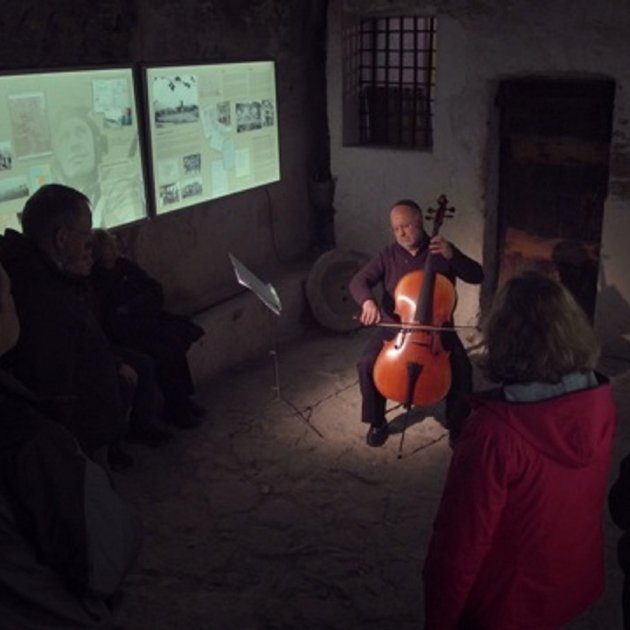Some 10,00 Jews saved their lives between 1939 and 1944 by fleeing France across the Pyrenees to Catalonia. The odyssey of these fugitives is the plot of a new documentary, Perseguits i salvats (Chased and saved), to premiere on Catalan local channels, Movistar+ and La Xarxa this Saturday, 25th November. The film, directed by Daniel and Jaume Serra, recreated the journeys of these fugitives through their descendants repeating the crossing, and through interviews with Paquita Sitzer, who crossed the Pyrenees with her parents and brother when she was 5 and who now, 75 years later, has returned to Catalonia to take part in the filming of the documentary. She also attended the film's presentation where she talked to journalist Pilar Rahola.
From France to Sort prison
The routes leave France through the most inhospitable areas of the region, because they were the ones least watched by German patrols. The fugitives, many of whom had to travel without clothing or footwear suited to the high mountains, had to walk at night to go undetected. They went very slowly because the groups often included children, older people, sick people and people suffering from malnutrition. Always scared, because if they were spotted by gendarmes or Nazis they were sent directly to the extermination camps. And when they arrived at the first post of Spain's Civil Guard, they were completely free: they were locked up in Sort prison (now a museum), in pitiful conditions. And some, if they were unlucky, were sent back to France, from where they were sent to the camps. It seems incredible, watching the documentary, that such a beautiful place could see such horror...
History hidden by the victims themselves
"There where things which my mother explained to me when my father wasn't around", explains the daughter of two of those who fled over the Pyrenees and ended up in Sort prison. There are aspects of their escapes that the traumatised victims never recounted. A handful of children and grandchildren of fugitives, accompanied by historian Josep Calvet and the documentary's directors, wanted to get closer to the history and experience the crossing for themselves. They were all very satisfied after having recreated the route taken by their ancestors, it let them all understand much better the memory of their family. There are stories, however, not explained in the documentary, or which are skipped over, and which shouldn't be forgotten: priests who got rich extorting the fugitives, guides who abandoned the Jews to their luck, bandits who robbed and killed those crossing the border, local inhabitants who informed on the escapees to the Nazis. Not everything was solidarity.
Years of research
The documentary, produced by La Xarca and the Diputació de Lleida, follows a long research project led by Calvet, who has studied the topic since finding, among the papers at Sort prison, a document about a group of Jews who had been held at the prison. The research, taken on by the Institut d'Estudis Ilerdencs (Institute of Lleida Studies), enjoyed the support of the Diputació de Lleida (Deputation of Lleida), which later published a book on the subject and placed signposts marking five of the routes used, adding cultural and touristic dimensions to the project. Joan Reñé, president of the Diputació, said that the routes act as a lesson in generosity and solidarity for the people of Lleida.
Moving
The documentary, by focusing on the experience and the memory of the descendants of Jewish fugitives, gives a limited view of the history. The escape routes not only enabled Jews to leave France, but also Allied airmen, enemies of Nazism who wanted to join the Free French and political opponents, as masterfully described by Francesc Viadiu, member of the resistance network, in Entre el torb i la Gestapo (Andorra, cadena de evasión in Spanish, apparently untranslated into English). On the other hand, as in so many studies on historical memory, there is an excessive tendency to present the victims as heroes (in this case at the expense of the true heroes, who were those who made and manned the escape routes). That said, the directors manage to get the most out of their limited resources. They make magnificent use of the beautiful Pyreneen scenery and cello music. And they weave a highly moving narrative out of an almost forgotten episode in the history of Lleida. With one clear advantage: they want to create an open story, leaving open many doors to debate. They say that the work is an "homage to a whole generation, one which the Nazis didn't want to exist". They added that it's worth remembering that today there are still people who have to flee their countries, and that Europe doesn't treat them the way it should.
